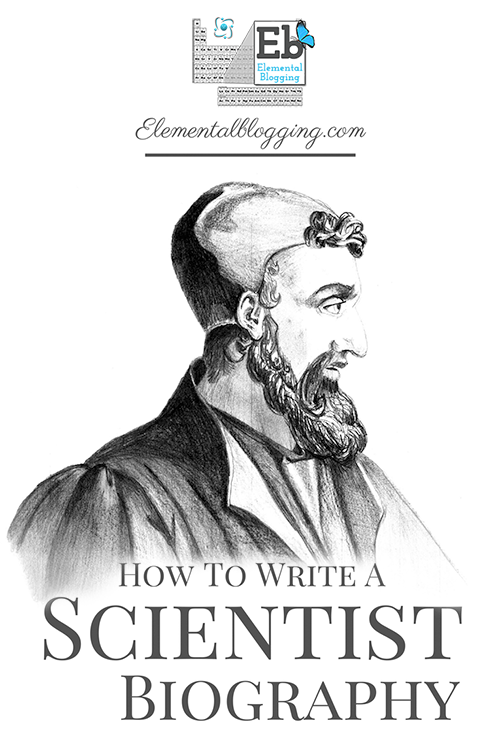 I recommend that students beginning writing biographies on key scientists they read about beginning in third or forth grade.
I recommend that students beginning writing biographies on key scientists they read about beginning in third or forth grade.
We have done this several times already in our homeschool, so I thought that I would share with you about how we write scientist biography reports in 5 easy steps.
How to write a scientist biography report
Step 1: Choose and Read the Book
The first step for writing any scientist biography report is to have the student choose a biography to read. For us this step is super easy, because the books are already scheduled in Physics for the Grammar Stage.
If you don’t have a book already scheduled for you with your science program, simply choose the scientist you would like to study and then head to your local library. The children’s literature section generally has a section for biographies, which makes it easy to find a book that will work for your student.
Once you have your book selected, you need to read it. I gave our daughter the option of scheduling the book herself for the first time with our last scientist biography report. I simply gave her the date that it was due and then let her loose. I did remind her each day of her impending deadline, as we are working towards more independence and we are not there yet :).
Each day, she also gave me an oral narration, just so I knew that she understood what she was reading.
Step 2: Answers Some Questions
After the student finishes reading the book, have her answer a few questions about the book. These are included in the teacher’s guide of our programs, but I’ll post them here for you.
- Who was the scientist you read about?
- When and where were they born?
- What was their major scientific contribution?
- List the events that surround their discovery.
- List some other interesting events in the scientist’s life.
- Why do you think that it is important to learn about this scientist?
Here is a free printable for you to use with your students as they answer these questions:
At this time I don’t require complete sentences when she answers these questions as they are designed to give her a basic outline. My goal here is for her to have a list of facts to pick and choose from when she goes to write her actual report.
Step 3: Write a Rough Draft
The next day read over the student’s answers and talk about how to structure her report. My goal for my daughter is to write a four paragraph report, but we are still working on that. Ideally she will have one paragraph with the introduction and biographical information, one paragraph on their major discovery and the events surrounding it, one paragraph on some other events in the scientist life and a final paragraph that concludes the report and shares why someone should study the scientist.
I usually give her three choices for her report format – a mini-book, a full size poster, or a standard report. No matter what the student chooses, the rough draft is written on lined paper, skipping every other line so that there is room for editing.
Step 4: Editing
The day after the student completes step 3, you need to edit it. We read the whole draft together when editing because when we do it this way, she usually picks up most of the errors on her own. This makes the corrections are hers instead of mine, which saves us quite a few tears. I will point out any remaining errors and then we move on.
If she has chosen to do a poster, we will also work on a presentation layout at this time.
Step 5: Prepare the Final Report
The day after you edit, the student should pull together her final report. This step is fairly easy because we’ve done all the work in the previous four steps. At this point I don’t grade my daughter’s final reports, but it is something I plan on doing as we get further along. My goal for these years is to get her used to the process of writing a book report and then, as time goes by we will work on refining her content.
The Final Product
Choose and read a scientist biography, answer the questions, write the rough draft, edit, and prepare the final report. That is how you can write a scientist biography report in five easy steps. Hopefully this post inspires you to try writing one with your students!
 Sign up below to receive weekly tips & tools for homeschool science and we'll send you a FREE copy of
Sign up below to receive weekly tips & tools for homeschool science and we'll send you a FREE copy of 